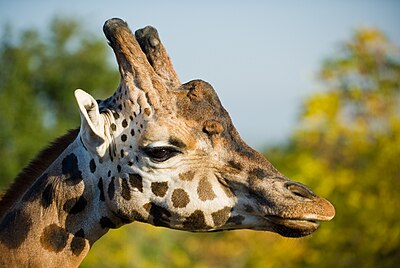Wikipedia:Main Page history/2022 February 18b
From today's featured articleThe Wonderful Parliament was a session of the English parliament held from October to November 1386 in Westminster Abbey. Called by King Richard II (depicted) to address his need for money, it attempted to reform his administration. Richard had become increasingly unpopular due to perceived extravagance towards his political favourites and the unsuccessful prosecution of war against France. Discontent climaxed when Richard requested a then-unprecedented sum to raise an army. The House of Lords and the House of Commons united against him and his unpopular chancellor, Michael de la Pole, demanding the latter's impeachment. Richard requested the Commons send a delegation to negotiate; Parliament, fearing an ambush, sent two lords instead. The lords threatened Richard with deposition until he agreed to do Parliament's bidding. He was forced to sack de la Pole and was restricted to advisers appointed by parliament. The King was incensed and left Westminster almost immediately. (Full article...)
Recently featured:
Did you know ...
|
In the news
On this day
More anniversaries:
|
From today's featured list
There are 27 listed buildings in the rural area of Runcorn, a small industrial town in the borough of Halton in Cheshire, England. In the United Kingdom, a listed building is a building or other structure officially designated as being of special architectural, historical, or cultural significance. Three of the buildings in the area are classified as Grade II*, and the others are at Grade II; there are no buildings in Grade I. The ages of the structures on the list range from the ruin of Clifton Hall, built in 1565, to the telephone kiosk in Daresbury, which dates from the 1930s. The three Grade II* listed buildings include the only church in the list (pictured) and two former mansion houses. The church and one of the mansion houses are in Daresbury, and the other mansion house is in Moore. Daresbury also contains a former sessions house. (Full list...)
Today's featured picture

|
The northern giraffe (Giraffa camelopardalis) is native to North Africa. The northern giraffe has two horn-like protuberances known as ossicones on their foreheads. These are longer and larger than those of the southern giraffes, although bull northern giraffes have a third cylindrical ossicone in the center of the head just above the eyes which range in length between 3 inches (8 cm) and 5 inches (10 cm). This individual was photographed at Zoo d'Amnéville in northeastern France. Photograph credit: Stefan Krause
Recently featured:
|
Other areas of Wikipedia
- Community portal – Bulletin board, projects, resources and activities covering a wide range of Wikipedia areas.
- Help desk – Ask questions about using Wikipedia.
- Reference desk – Serving as virtual librarians, Wikipedia volunteers tackle your questions on a wide range of subjects.
- Site news – Announcements, updates, articles and press releases on Wikipedia and the Wikimedia Foundation.
- Teahouse – To ask your first basic questions about contributing to Wikipedia.
- Village pump – For discussions about Wikipedia itself, including areas for technical issues and policies.
Wikipedia's sister projects
Wikipedia is written by volunteer editors and hosted by the Wikimedia Foundation, a non-profit organization that also hosts a range of other volunteer projects:
-
Commons
Free media repository -
MediaWiki
Wiki software development -
Meta-Wiki
Wikimedia project coordination -
Wikibooks
Free textbooks and manuals -
Wikidata
Free knowledge base -
Wikinews
Free-content news -
Wikiquote
Collection of quotations -
Wikisource
Free-content library -
Wikispecies
Directory of species -
Wikiversity
Free learning tools -
Wikivoyage
Free travel guide -
Wiktionary
Dictionary and thesaurus
Wikipedia languages
This Wikipedia is written in English. Many other Wikipedias are available; some of the largest are listed below.
-
1,000,000+ articles
-
250,000+ articles
-
50,000+ articles





